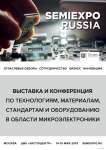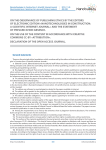Статьи журнала - Nanotechnologies in Construction: A Scientific Internet-Journal
Все статьи: 409
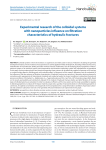
Статья научная
Colloidal systems in form of emulsions or suspensions are widely used in various of industries including oil-gas fields development industry. Invert emulsions and suspensions are actively applied in fields development, including enhanced oil recovery, intensification of oil production, drilling and wells workover. Results of laboratory tests for studying physical properties of heterogeneous systems as an emulsion system with nanoparticles and emulsion-suspension system with nanoparticles are presented in this paper. Having unique physical and chemical properties these systems can be effectively applied in upstream of oil and gas as a water-limiting agent or blocking pack with reversible effect. In framework of this research, laboratory tests for evaluation of the influence of the new systems on filtration characteristics of hydraulic fractures are carried out. Laboratory tests are planned in accordance with requirements of international standards and conducted under the closest conditions to subsurface thermal and pressure conditions of formations STyr Abdylovskoe, SBASh Yugomashevskoe and YuS-2 and YuS-4 of Tortasinskoe oil-gas fields. Based on the results, permeability and conductivity indexes of the models of hydraulic fractures before and after filtration of the new types of colloidal systems are calculated. In order to evaluate an efficiency of the new systems and to study a possibility to regulate its blocking properties an analysis of the impact made by a type and a quantity of nanosized solids on to the blocking properties is carried out. An optimal concentration of nanoparticles in the compositions for a range of formation conditions of particular carbonate and sandstone subsurface reservoirs of oil-gas fields of Russian Federation are represented in this paper.
Бесплатно
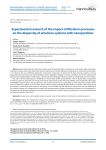
Статья научная
Hydrocarbon based emulsions are actively used as technological fluids in the processes of oil and gas wells construction, drilling-in, workover, and in the improved oil recovery methods such as intensification of oil production, water shut-off and others [1, 2]. However, the area of effective application of emulsion compositions is determined by their physical properties. Classical hydrocarbon emulsions have low thermal stability and lose aggregative stability in reservoir conditions, due to the coalescence of globules of the dispersed phase, which leads to a decrease in the technological efficiency of their use in high-temperature formations. The authors of the article propose a modification of the emulsion system by the addition of silicon dioxide (SiO2) nanoparticles in order to improve its properties. Previously, the results of experimental studies of thermal stability, which revealed the advantages of modified emulsion system with nanoparticles over classical emulsions were presented. [3]. The comparative analysis of the results of laboratory studies on the emulsion system with nanoparticles dispersity after filtration in porous media using optical microscopy is presented in article. Based on the analysis it was revealed that after filtration in natural rock cores the dispersity of the emulsion system with nanoparticles increased, and that phenomenon might be described by absence of the coalescence in the emulsion, and globules breakdown to smaller size during filtration through the porous media of rock cores from Abdulovskoe and Yugomashevskoe oil-gas fields.
Бесплатно
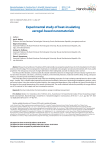
Experimental study of heat-insulating aerogel-based nanomaterials
Статья научная
Research and synthesis of materials with fundamentally new properties play the key role in the development of modern science and technology. The most perspective materials are considered to be aerogels: nanostructured materials with many useful properties. The mesoporous structure of airgels determines their widespread use, both in industry and in science. Over the past few decades, nanostructured silica-based material has become an integral part of many industry segments: thermal and noise insulation, electronics, chemistry, medicine, environmental protection, industrial and fire safety, energy, aerospace industry, consumer goods and military technology. The article discusses an experimental study of the heat-shielding properties of a heat-insulating material based on silicon oxide airgel – Insuflex. This is a flexible rolled material used for thermal insulation of elements of technological installations, pipelines, valves and control valves. Using the method of ordinal statistics, the exponential dependence of the coefficient of thermal conductivity of the airgel on the average temperature of the sample is determined. The results obtained indicate the possibility of energy-efficient use of the material in heat supply and heat consumption systems.
Бесплатно
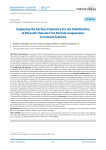
Статья научная
Introduction. The evolution of the construction industry in its current stage calls for the alteration of traditional building materials through the incorporation of nano- and fine-dispersed additives. These additions confer new, unique attributes to cement-based construction materials, enabling control over structure formation processes. Consequently, this allows for the creation of materials with specifically defined characteristics. Additives can be introduced into the cement composite during the joint grinding with clinker minerals, as a component of dry building mixture, or in the form of a suspension instead of mixing water. Therefore, it is essential to obtain fine particles suspensions resistant to aggregation and sedimentation. Thus, the purpose of this study is to obtain stabilized suspensions of bismuth titanate fine particles for cement systems and to study the properties of modified cement stone. Materials and methods. The purpose of this work was to establish the optimal concentration of polycarboxylate plasticizer in industrial water, necessary for the stabilization of fine bismuth titanate suspensions using surface tension and conductometric determination methods, the sedimentation stability of the obtained suspensions and the effect of ultrasonic exposure, as well as the physical and mechanical characteristics of cement stone modified with the obtained suspensions. Results and discussion. In order to establish the optimal concentration of the plasticizer necessary to obtain stable suspensions of bismuth titanate particles, the critical micelle concentration (CMC) for the plasticizer was determined with tap water as the dispersed medium. The CMC value was 1.3 g/l. If the concentration exceeds CMC, the process of micelle formation begins. In the micellar form, the plasticizer no longer provides stabilizing effect on the additive particles, therefore, the concentration of the plasticizer should be lower than the CMC. It was also found that ultrasound exposure increases the sedimentation stability of suspensions. The resulting stabilized suspensions were used instead of mixing water to obtain modified cement stone samples. There is an increase in the compressive strength of cement stone samples obtained after the introduction of fine bismuth titanate into the cement composite in the form of water suspensions stabilized by ultrasonic treatment with concentrations of 10, 30 and 50 g/l. The increase in compressive strength of modified samples compared to reference sample was from 24 to 33 MPa at first day age (by 13, 25 and 38% respectively), and from 80 to 93 MPa at 28 days age (by 4, 9 and 16%). Compressive strength of samples modified with bismuth titanate suspensions after ultrasonication compared to reference sample with plasticizer increased mostly at the first and third days age: from 29 to 42 MPa (by 31, 38 and 45%) and from 53 to 70 MPa (by 28, 30 and 32%) respectively. Conclusion. As a result of the research carried out in this study, the Critical Micelle Concentration (CMC) of a polycarboxylate plasticizer was determined, optimal for stabilizing fine-dispersed additive of bismuth titanate for cement systems, the effectiveness of ultrasonic treatment to achieve sedimentation stability of the obtained suspensions of the additive was confirmed, an increase in the strength characteristics of modified cement stone samples was established both in the initial hardening periods and at 28 days age. The results allow to consider a cement composite with fine bismuth titanate as a basis for obtaining building materials of new generation.
Бесплатно
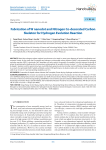
Fabrication of W nanodot and Nitrogen Co-decorated Carbon Skeleton for Hydrogen Evolution Reaction
Статья научная
Metal dots-nitrogen-carbon catalysts have become a hot topic in recent years because of special coordination environment. Herein, for the study the W nanodots and nitrogen co-decorated carbon skeleton (W@NC) was prepared for hydrogen evolution reaction (HER). In particular, NaCl templates not only restrict the growth of nanodots, but also improve the purity of phase. By optimizing the feeding ratio of ammonium metatungstate, W nanodots (the size is about 1.2 ± 0.6 nm) dispersed well on N-doped C skeleton, and this special structure could effectively promote electron transfer and ion diffusion during HER process. As a result, the optimized W@NC hybrids exhibited excellent HER performance in alkaline media with a rather low over-potential (228 mV at 10 mA cm–2) and outstanding durability over 10 h.
Бесплатно
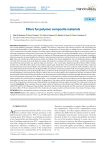
Fillers for polymer composite materials
Статья научная
Introduction. For the production of building products made of PVC, compositions are used that, along with the polymer, include additives: plasticizers, stabilizers, modifiers. This leads to a decrease in the chlorine content in the composition and increases the flammability of the productitself. Therefore, nanoparticles of various fillers are added into the compositions. Fillers inPVC compositions (more often inorganic, less often organic substances) are solid additives that differ from the polymer matrix in chemical composition and structure.In most cases, the main function of fillers is to reduce flammability and cut costs of the products obtained, in some cases they serve to impart or improve the following properties: reducing plasticizer absorption, changing in dielectric properties, increasing rigidity and hardness, reducing noise transmission, reducing toxicity of combustion products. Main part. Fillers are classified according to various criteria. According to the state of aggregation, they are divided into gaseous, liquid and solid. By their nature, they are divided into organic and inorganic; according to the source of receipt – reinforcing, strengthening, reinforcing, neutral; bythe size, particle shape and structure – into 4 main types: dispersed (powder); fibrous (fibers, threads, bundles, etc.); sheet (film) with a given structure (fabrics, paper, tapes, sheets, films, nets); volumetric (framework) with a continuous three-dimensional structure (bulk fabrics, felt, skeletal and porous frameworks). The most commonly used solid fillers, which are also called dispersed. The introduction of dispersed fillers into polymer composite materials (PCM) is more appropriate for creating mass-produced materials, more technologically advanced, with a low level of strength characteristics. Dispersed fillers are introduced into thermoplastics with high fracture energy to reduce their cost, increase stiffness and compressive strength, and improve their technological characteristics during processing. At the same time, their tensile strength and impact strength decrease due to reduction in the proportion of polymer in the filled composition. The introduction of solid and hard particles leads to an increase in the elastic modulus (E); and soft, elastic or gaseous fillers – to its decrease. According to the mechanism of action, dispersed fillers can be divided into inert ones, which do not affect the properties of the matrix and are introduced into its composition to reduce the cost of the composition, and active ones. Dispersed fillers are divided into mineral, organic and metal. The commonest of those are minerals. Conclusion. Thus, at present, there are a large number of substances and materials used as fillers and making it possible to obtain PCM with low shrinkage and shape stability of products, high mechanical properties and the necessary set of special properties. Due to fillers, PCM can compete with other materials such as glass, ceramics and even metal in most areas of human activity.
Бесплатно
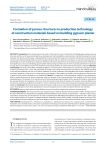
Статья научная
Introduction. This article presents the results of the research works on formation of building gypsum plaster porous structure with the use of recovered anhydrite raw materials and chemical additives, and describes a method for production of wall materials. The relevance of this paper is stipulated by the need to expand the range and increase the manufacture of heat-insulating and structural-heat-insulating products based on gypsum binders and local mineral raw materials, as well as the development of technologies to ensure the production of gypsum materials with improved performance. The authors proposed certain methods for forming the porous structure of building gypsum plaster and improving its performance in terms of porosity and thermal conductivity through the use of modified recovered raw materials and chemical additives of calcium chloride and sodium carbonate. Materials and methods. The study of the effect of modifying additives on the properties of the mixture was carried out using gypsum paste of normal consistency (NC = 55%). The preparation of samples and testing were performed according to the methods specified in the national standards with the use of porous additives of calcium carbonate, fluoroanhydrite and chemical additives for the rheological properties of the mixture, average density and strength of the samples, the patterns and mechanism of the processes of gypsum stone structure formation were established. Results. The application of fluoroanhydrite modified in the disintegrator with an equimolar amount of calcium carbonate leads to a decrease in the average density of the samples to 40% with evenly distributed pores. The analysis of the microstructure of heat-insulating material samples with a density of 550 kg/m3 showed that the average diameter of micropores is 0.45 mm, while the thermal conductivity of samples with complex chemical additives has the thermal conductivity coefficient of 0.25 W/m°C, which is 30% lower than the thermal conductivity of samples without complex additives. Conclusions. The results obtained create the basis for using recovery raw materials and domestic modifying additives as a pore-forming agent, which allow regulating the structure of gypsum stone in order to produce effective wall materials.
Бесплатно
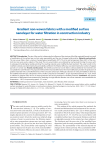
Статья научная
Introduction. The aim of the work is to determine the influence of the structure of the filter materials formed as a result of modification of the surface layer on their water permeability and the size of trapped solid particles. Materials and methods. The non-woven fabrics from a mixture of polyethylene-terephthalate (PET) (70 wt.%) and bicomponent fibers (BCF) of the coreshell structure were used as objects of the study. The non-woven fabrics were obtained by mechanically forming the canvas with its subsequent hardening by needle punching. The resulting materials were modified by heat treatment. The water transfer in the modified materials was determined by the permeability coefficient. The filtration efficiency was determined by the number of trapped particles of a certain size. Results and discussion. The needle-punched non-woven fabrics without additional heat treatment are not suitable for water filtration. The proposed method of thermal and deformation-thermal modification provides the production of gradient materials with a controlled thickness of the nanoscale surface layer. Although a decrease in water permeability is observed, the modified material traps solid particles with a smaller (compared to unmodified ~ 20 μm) equivalent diameter of 2–4 μm, which is sufficient to prepare water for use in steam generators and in the production of building materials. Conclusion. The optimal parameters of deformation-heat treatment for obtaining the high-effective filtration non-woven materials were established: the temperature – 180оC, the processing speed – 3.5 m/min.
Бесплатно

